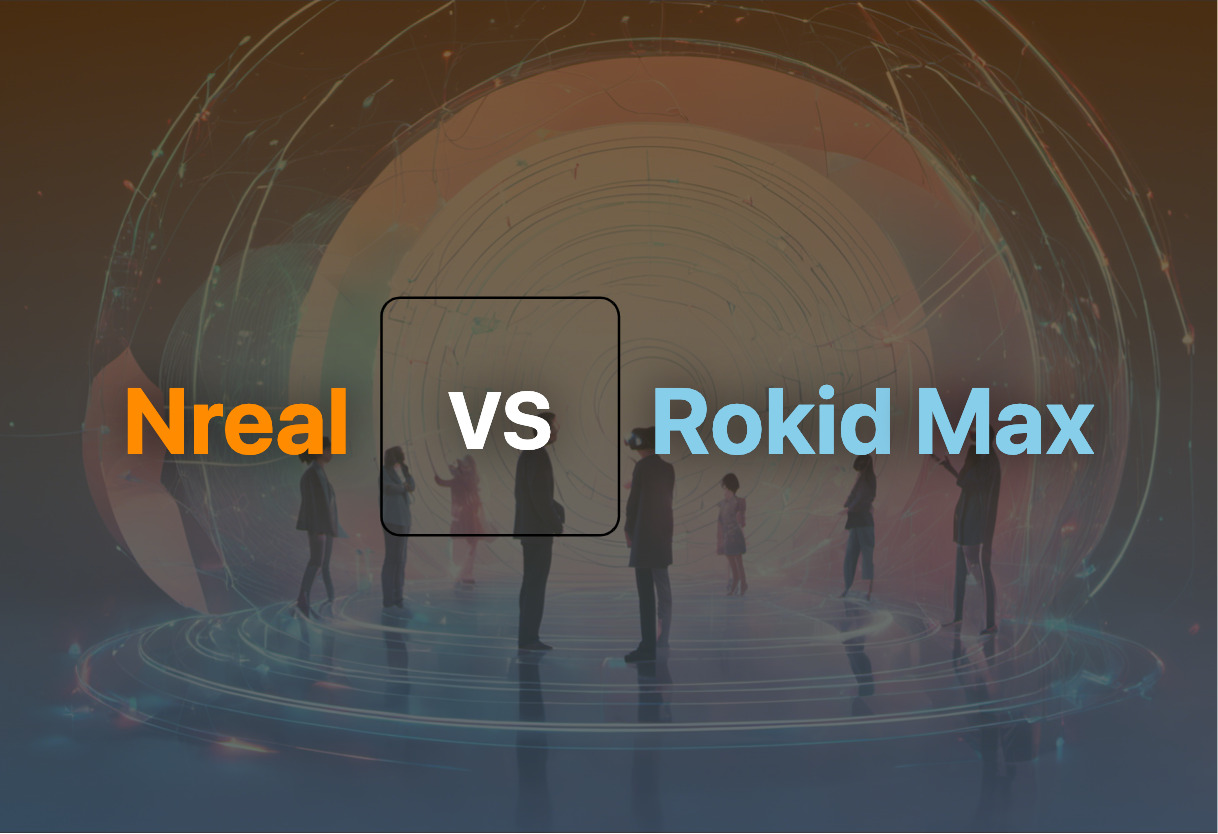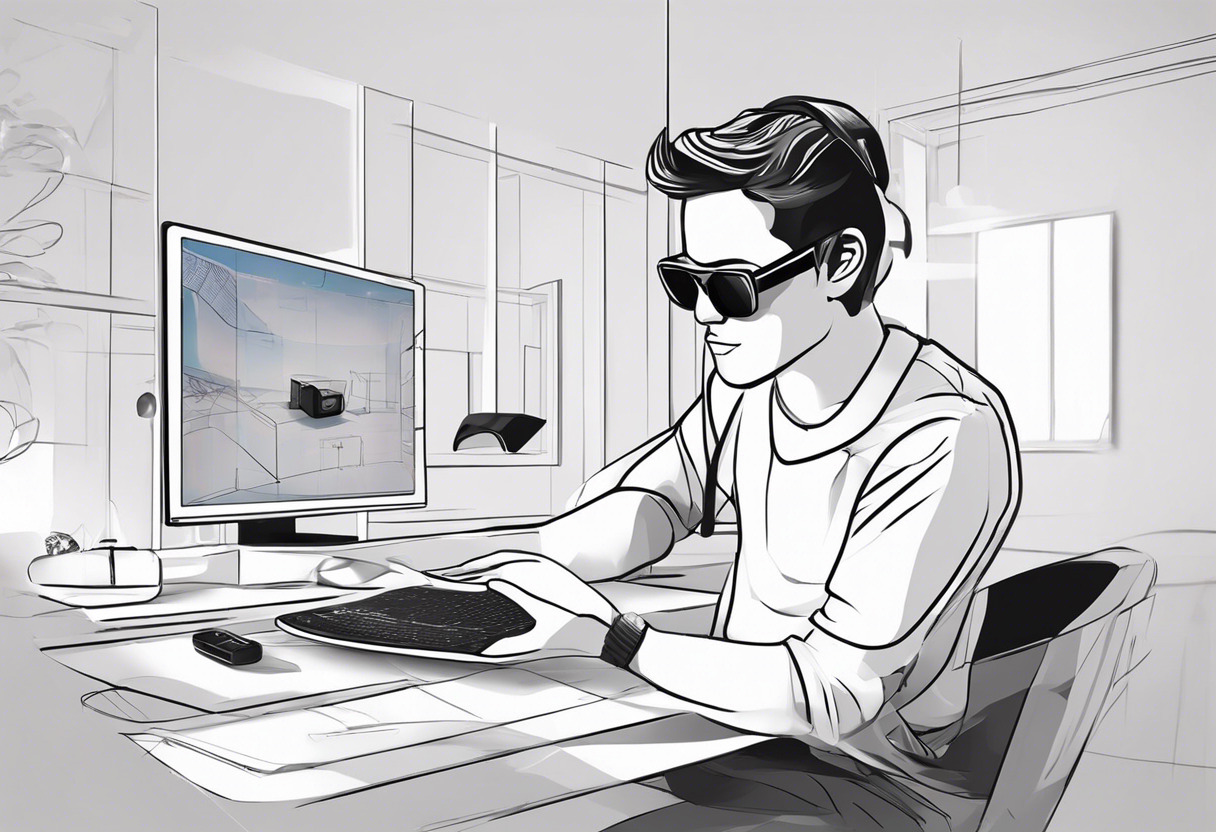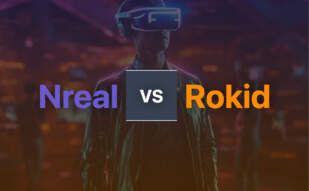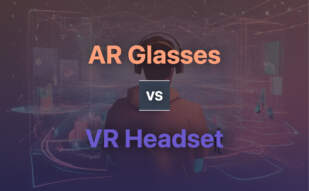For high-end AR/VR enthusiasts, Nreal’s mixed reality systems bring superior graphics, broad application appeals and transformative tech, albeit at a higher price. However, for casual gamers and tech enthusiasts, the Rokid Max offers sufficient functionality, noteworthy lens quality, and more affordability.

Key Differences Between Nreal and Rokid Max
- AR/VR Types: Nreal utilizes both VR and AR technologies to create mixed reality systems. Rokid Max primarily focuses on AR through smart glasses.
- Performance: Nreal provides superior graphics and performance with its built-in screen headsets, while Rokid Max offers 1080P FHD Micro-OLED with commendable 120 Hz refresh rate.
- Compatibility: Rokid Max supports major game consoles and PCs with HDMI port. Nreal’s compatibility is not specified.
- Price: Rokid Max, priced at $499, is cheaper than higher-end Nreal VR options.
| Comparison | Nreal | Rokid Max |
|---|---|---|
| Type | AR/VR Tech Company | AR Smart Glasses |
| Display Performance | Built-in screen VR headsets have superior graphics and performance | 1080P FHD Micro-OLED with SONY Semiconductor Solutions Corporation’s panel |
| Field of View | Dependent on headset type | 50° FoV |
| Applications | Gaming, marketing, e-commerce, education | Mostly gaming, compatible with major game consoles |
| Technology | Eye tracking, Infinite Display | Myopia adjustment, HDMI to USB-C adapter compatibility |
| Weight | Depends on headset type | 75g |
| Connectivity | Depends on headset type | Devices with USB-C DisplayPort and OTG (Android 10 or later) |
| Pricing | Depends on the headset. Range varies vastly | Priced at $499 on knoxlabs, Pre-order price listed as $599 |
What Is Nreal and Who’s It For?
Nreal pioneers in AR/VR technology, merging digitized dreams with reality through their mixed reality systems. Their innovative engineering disputably sets them apart in the tech world, allowing users to stroll through computer-generated universes or superimpose digital phantoms onto the real world. This tech powerhouse is crafted for those hungry for vivid, immersive experiences, and suited to anyone from virtual world builders to software developers, from gamers to marketers.

Pros of Nreal
- Combination of AR and VR systems creating unique mixed reality experiences
- Eye-tracking in VR for high-resolution graphics
- Infinite Display offering superior contrast, sharpness, and color range
- Versatile application across industries
Cons of Nreal
- Potentially high cost due to advanced technology
- Might have a steep learning curve for non-tech-savvy users
What Is Rokid Max and Who’s It For?
Rokid Max, an embodiment of AR ingenuity, sports smart glasses that virtually mesh with reality. This tech novelty allows gamers and tech connoisseurs to enjoy a 215” borderless screen from the comfort of their living room. Radiating high-end optics and design, it’s intended for gaming enthusiasts, professionals requiring high-definition accessible information, or anyone in love with the seamless blend of reality and virtuality.

Pros of Rokid Max
- 50° FoV with a 215″ borderless screen
- 1080P FHD Micro-OLED with SONY Semiconductor Solutions Corporation’s panel
- Compatibility with major game consoles and PCs
- Myopia adjustment feature, supporting 0.00D to -6.00D
Cons of Rokid Max
- May be expensive for the average consumer
- Requires compatible devices with USB-C DisplayPort and OTG
- Limited to Android 10 or later for smartphone connectivity
The Ultimate Verdict: Nreal or Rokid Max?
After an in-depth exploration of Nreal and Rokid Max’s capabilities, we reach the concluding crossroads. Let’s define the superior choice for varying user segments.
Game Creators
The Rokid Max proves to be a boon for game creators, thanks to its compatibility with major game consoles and the immersive experience provided by its impressive 50° FoV and 215″ borderless screen. Coupled with a 120 Hz refresh rate and HDMI to USB-C Adapter compatibility, it offers unrivaled fluidity of gameplay.

Developers and AR/VR Creators
For those pioneering AR/VR innovations, Nreal stands out with its multi-faceted functionality – an ecliptic blend of AR and VR, thus birthing a uniquely interactive mixed reality systems. Its advanced technologies like Spatial Anchors, Scene Understanding, and stereoscopic color Passthrough make it a potent choice for immersive applications development.

Healthcare Sector
When it comes to the healthcare arena, Nreal’s VR technological prowess allows for immerse, realistic simulations facilitating complex procedure training and therapy. It’s proven to be an invaluable tool for enhancing healthcare practices.

Lightweight User
The lightweight user seeking portability and comfort will find the Rokid Max to be a clear winner. Weighing just 75g, with a titanium casing for durability and a company-claimed 90% reduction in light leakage, it is primed for extended use without causing discomfort.

For game creators needing advanced compatibility and seamless gameplay, Rokid Max rules. However, AR/VR developers and healthcare sector gravitate towards Nreal for its versatile mixed reality experiences and practical training applications. Rokid Max’s light frame caters to mobile users. Ultimately, your mileage may vary depending on specific needs and use-cases.
Hannah Stewart
Content writer @ Aircada, tech enthusiast, metaverse explorer, and coffee addict. Weaving stories in digital realms.





